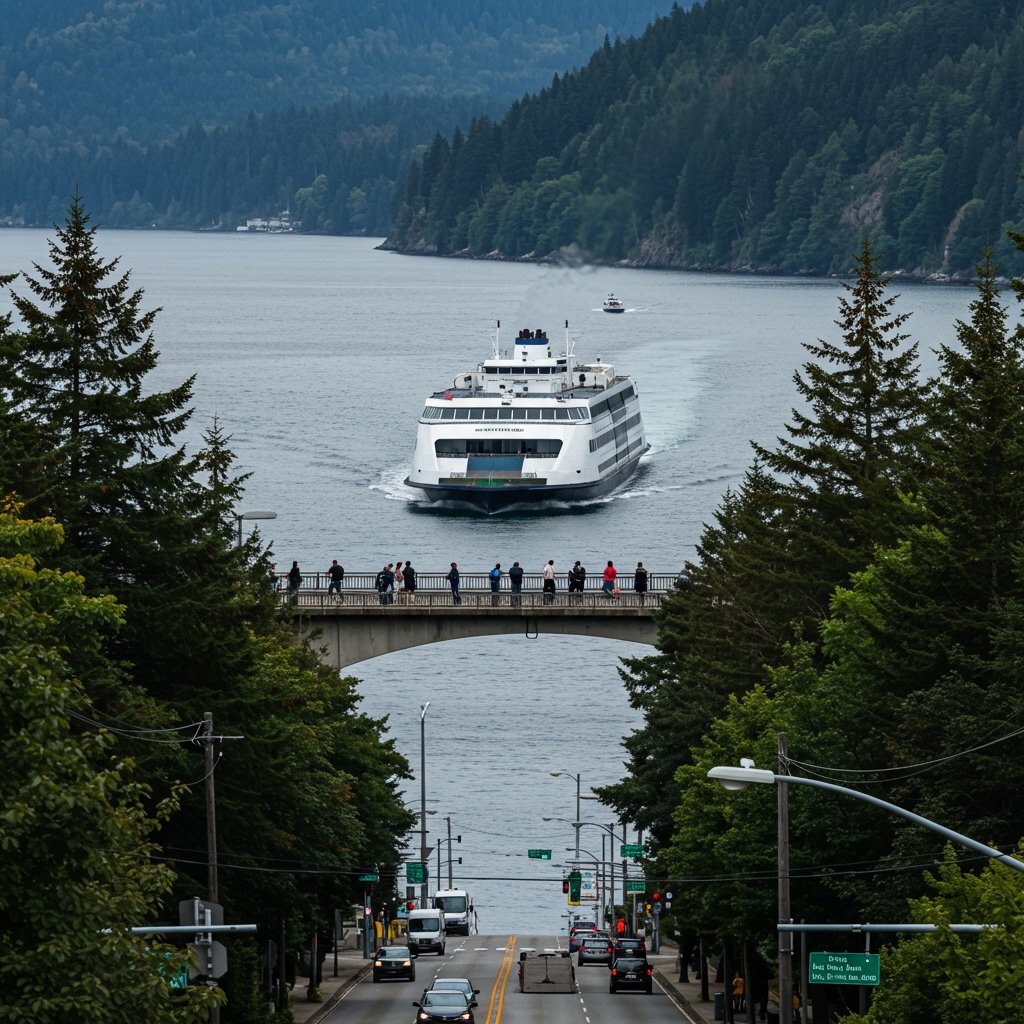Landmark Funding Bill Signed
OLYMPIA, WA – A significant milestone was reached on June 10, 2025, with the signing of State Bill SB 789 into law. This pivotal legislative action allocates a substantial $350 million specifically earmarked to fund a major expansion of high-speed ferry services across the Puget Sound region. The funding represents a critical investment in the state’s transportation infrastructure, aimed at alleviating congestion on increasingly crowded roadways and providing residents and visitors with faster, more reliable transit options over water.
The passage of SB 789 underscores the state legislature’s commitment to enhancing regional connectivity and exploring innovative solutions to meet the growing transportation demands of the Puget Sound area. The $350 million infusion is expected to cover a wide range of costs associated with establishing and operating expanded high-speed ferry routes, including vessel acquisition, infrastructure development, and initial operational expenses. This funding is foundational to turning ambitious transportation plans into tangible reality, promising a transformative shift in how people move within the region.
Project Scope and Goals
The extensive project is a collaborative effort, managed by the Washington State Department of Transportation (WSDOT) in close partnership with various regional transportation authorities and stakeholders. The overarching goal is to develop a robust, high-speed ferry network that significantly reduces travel times compared to traditional ferry services or automobile travel around the Sound. By leveraging the region’s natural waterways, the project aims to offer a viable and attractive alternative mode of transit.
The benefits of this expansion are anticipated to be far-reaching. For daily commuters, the high-speed service promises to cut down hours spent in traffic, freeing up valuable time and reducing the stress of travel. For tourists visiting the Pacific Northwest, the expanded network will provide convenient and scenic access to coastal communities and attractions, potentially boosting local economies in destination cities like Bellingham and Bremerton. WSDOT and its partners are focused on creating a network that is not only fast but also integrated with existing transit systems to ensure seamless end-to-end journeys.
New Routes and Infrastructure Upgrades
A key component of the expansion funded by SB 789 is the strategic planning and implementation of new high-speed ferry routes. Two priority corridors identified for this initial phase are a direct connection between Seattle and Bellingham, and another linking Tacoma to Bremerton. These routes were selected based on projected demand, potential for travel time savings, and their ability to connect major population centers currently served primarily by road or conventional ferries with much longer journey times.
Establishing these new routes requires more than just new vessels; it also necessitates significant investment in shoreside infrastructure. The project budget includes provisions for essential upgrades to existing ferry terminals, as well as potential development at new locations, to accommodate high-speed ferry operations. These upgrades might involve improvements to docking facilities, passenger boarding areas, ticketing systems, and intermodal connections to other transit services. Ensuring terminals can efficiently handle the anticipated volume and speed of high-speed ferry traffic is critical for the network’s success and passenger experience.
Development Timeline
Following the securing of funding through SB 789, the project is set to move forward rapidly. According to WSDOT Director Sarah Chen, initial construction phases related to infrastructure development and site preparation are scheduled to commence in late 2025. This marks the transition from legislative approval and planning into physical implementation on the ground. Director Chen emphasized that this phase is crucial for laying the groundwork for the subsequent introduction of high-speed vessel operations.
The ambitious timeline projects that full high-speed ferry service on the new and enhanced routes will be ready to launch by late 2027. This two-year window from the start of construction is intended to allow sufficient time for infrastructure completion, vessel procurement and testing, crew training, and final operational planning. While aggressive, WSDOT and its regional partners are committed to meeting this target to deliver the promised travel time reductions to the public as soon as possible.
Anticipated Impact and Benefits
The launch of an expanded high-speed ferry network is expected to have a profound impact on transportation dynamics within the Puget Sound region. The primary benefit, as highlighted by project planners, is the drastic reduction in travel times. For example, the journey between Seattle and Bellingham, which can take several hours by car depending on traffic, is expected to be significantly shortened by a direct high-speed water route. Similarly, the Tacoma to Bremerton connection will offer a fast alternative to driving around the Sound or taking slower conventional ferries.
Beyond time savings, the project is poised to reduce pressure on regional highways, particularly Interstate 5, by diverting travelers to water. This could contribute to reduced traffic congestion and potentially improve air quality. The accessibility provided by faster ferry links could also spur economic development in destination cities, making them more attractive for business, tourism, and potentially even residential relocation for those commuting to larger centers.
Environmental Considerations
Recognizing the importance of environmental stewardship in the sensitive Puget Sound ecosystem, environmental impact studies for the high-speed ferry expansion project are currently ongoing. These studies are a standard but crucial part of the development process, designed to assess and mitigate any potential adverse effects of increased ferry traffic, wake patterns, terminal construction, and vessel operations on marine life, water quality, and shoreline environments. WSDOT and its partners are working to ensure the project adheres to all relevant environmental regulations and incorporates sustainable practices wherever possible.
The outcomes of these studies will help inform final route alignments, vessel specifications (such as propulsion technology and noise reduction measures), and construction methodologies to minimize ecological footprints. The commitment to thorough environmental review underscores the project’s aim to not only improve transportation but to do so in a manner that is responsible and protective of the Puget Sound’s natural resources.
Official Statements
While specific quotes were not immediately available beyond the timeline provided by WSDOT Director Sarah Chen, her confirmation of the late 2027 launch target signifies the agency’s readiness to execute this complex project. The collaboration between WSDOT and regional partners is key to the project’s success, pooling resources, expertise, and local knowledge to ensure the network serves the diverse needs of the region. This partnership approach will continue through the planning, construction, and operational phases.
Looking Ahead
With $350 million secured and a clear legislative mandate, the Puget Sound high-speed ferry expansion is moving from concept to reality. The coming months will focus on completing environmental reviews, detailed engineering, and procurement processes. The start of initial construction in late 2025 will mark the visible beginning of the transformation. The projected launch of full service by late 2027 is eagerly awaited by commuters, tourists, and regional planners alike, promising a faster, more connected future for transportation across the Puget Sound.


















